Supporting the shift towards a low-carbon economy in all sectors.
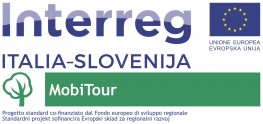
The overall goal of the project was to promote the joint design of sustainable multimodal urban mobility models in cross-border tourist areas, in order to encourage the use of alternative means of transport and render the area more attractive to tourists, while at the same time decreasing pollution, thanks to a better connection between the coastal area and the hinterland. This was linked to the program’s goal of the joint planning of low-carbon mobility.
The program area included numerous tourist towns like Caorle, Lignano, and Portorož on the coast, and Lipica and the Škocjanske jame Park in the karst hinterland, which suffer from congested mobility in the summertime due to the exponential increase in the number of tourists. The challenge was to effectively reduce vehicle emissions by improving urban and sustainable low-carbon mobility in the cross-border area, while at the same time ensuring better access to tourist areas. The overall objective was the joint design of sustainable mobility plans to stimulate the use of alternative means of transport and to reduce pollution, while at the same time ensuring better accessibility between the coastal areas and the hinterland. The result was the introduction of new urban mobility plans and the development of pilot measures, with the behavioural patterns of tourists and residents being influenced in such a way as to improve the knowledge and use of the new sustainable mobility services.
The outputs are as follows:
The approach involved the engagement of the local authorities, in order to encourage coordinated and sustainable planning, the citizens, in order to stimulate the conscientious use of public transport and electric vehicles, and tourists, in order to reduce congestion and pollution during peak periods. The project became a cross-border effort in the sense that it created a network of the areas with the greatest tourist presence, thus increasing the effectiveness of the environmental measures adopted. The innovation for the area consisted of the development of sustainable mobility plans that helped to reduce pollution and promote green and active tourism, which in turn improved the quality of life and tourism appeal of the entire area.
The result of the project was an increased use of low emission vehicles at tourist destinations along the coast, and connecting to the hinterland, thanks to the adoption of new mobility plans. The project envisaged the adoption of Sustainable Urban Mobility Plans (SUMPs) by the municipalities. In fact, based on the analysis of the pre-existing SUMPs, and with the elaboration of new SUMPs, new urban mobility systems were developed that respected the principles of sustainability and accessibility.
The project promoted multimodal and eco-sustainable transport, and the establishment of smart transport services for residents, travellers and tourists involving the use of electric vehicles, public transport, and other alternative means of transport (pedestrian and cycling paths) at coastal and hinterland tourist destinations.
The project mainly focused upon forms of sustainable transport, with particular regard to the reduction of vehicle emissions as a major cause of pollution. Based on the solutions envisaged in the innovative smart urban mobility plans, pilot measures were implemented in order to demonstrate the utility of the innovative measures adopted.
The improvement of the connections between the hinterland and coastal tourist areas was also of particular importance, meaning that the project also increased the appeal and accessibility of smaller tourist destinations. The result was a more comprehensive tourism offering, and a greater influx of tourists to the cross-border area involved in the project, with an improvement in quality of life for both residents and tourists alike.
Lead Partner
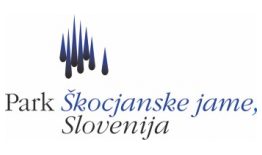
Project partner 1
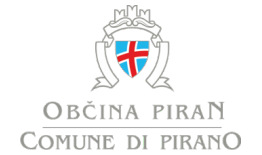
Project partner 2
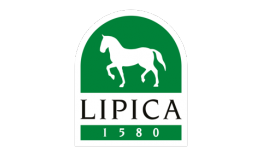
Project partner 3
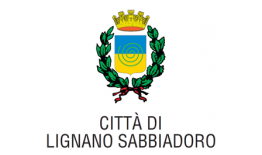
Project partner 4

Project partner 5
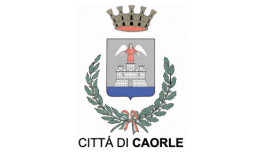
| Poster evento annuale 30/05/2018 MobiTour_ITA_2.pdf ( 653 bytes, published on 11 June, 2018 - 16:56 ) | |
| Brochure MobiTour Brochure_Mobitour_Ita_Slo_Eng_Final.pdf ( 5 bytes, published on 17 February, 2020 - 17:06 ) | |
| Roll Up MobiTour Mobitour_RollUP.pdf ( 10 bytes, published on 17 February, 2020 - 17:06 ) | |
| Poster MobiTour Poster_MobiTour.pdf ( 767 bytes, published on 17 February, 2020 - 17:06 ) | |
| Locandina_Festa dello Sport Lignano locandina 33x66 FDS2019.pdf ( 5 bytes, published on 20 February, 2020 - 09:16 ) |
MAIN OBJECTIVES OF THE PROJECTS
The overall objective of the MobiTour project was to promote the joint designing of models of sustainable multimodal urban mobility in the tourist areas of the cross-border area. This was done in order to encourage the use of alternative means of transport and to stimulate tourist attractiveness of the area, decreasing the pollution. The project also aimed to improve accessibility between the coastal area and the hinterland. It was linked to the program's objective in the joint planning of low-carbon mobility.
STATE OF THE ART
The MobiTour project - sustainable mobility of coastal tourist areas and the cross-border hinterland - included 6 partners of the Program Area: Park Škocjanske jame as Lead Partner, the Holding Kobilarna Lipica, the Municipalities of Piran, Lignano Sabbiadoro and Carole and the Institute of International Sociology of Gorizia.
The main objectives of the project were the following:
The main results achieved by the project are linked to these two objectives: